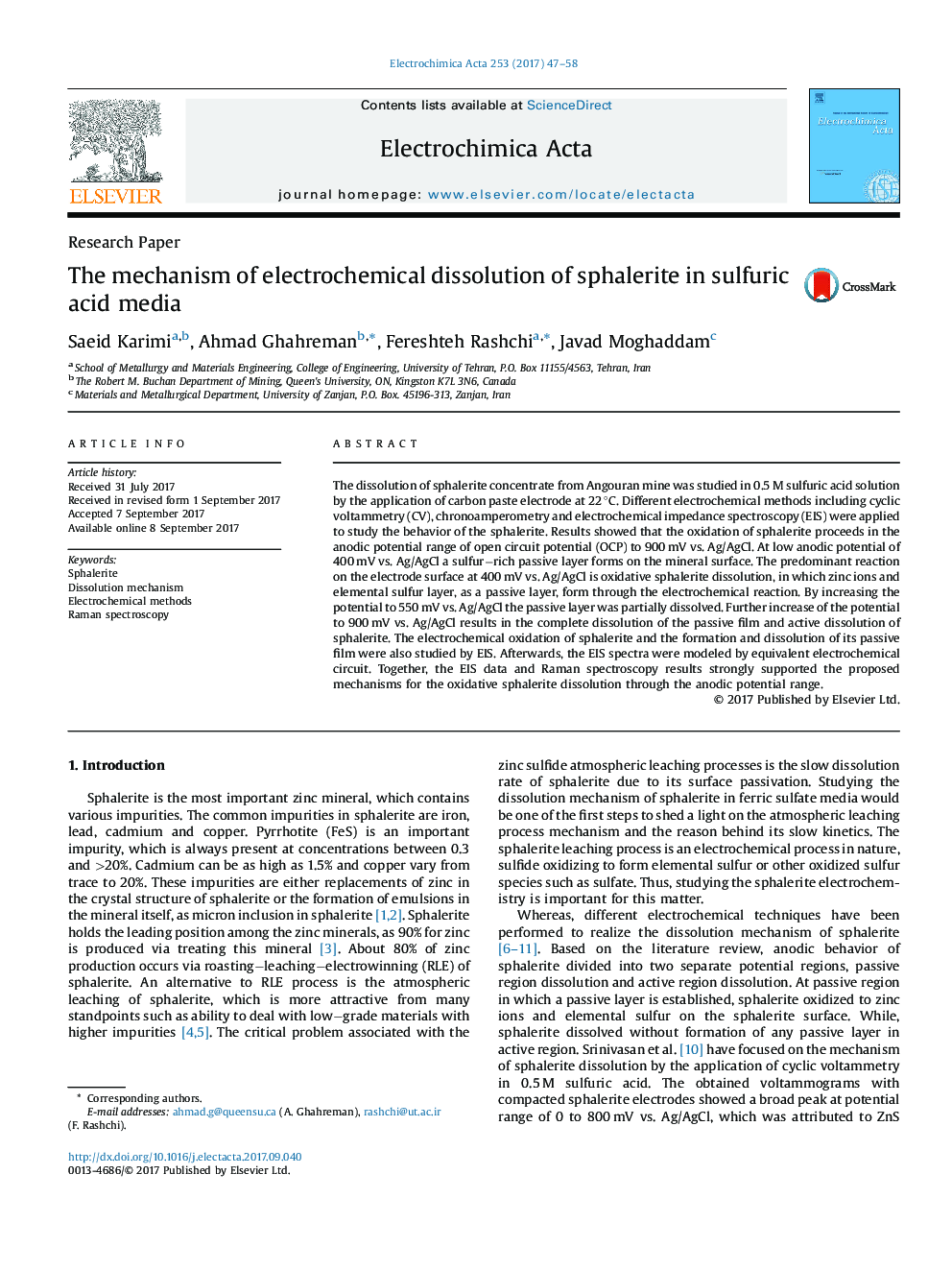| Article ID | Journal | Published Year | Pages | File Type |
|---|---|---|---|---|
| 6470042 | Electrochimica Acta | 2017 | 12 Pages |
The dissolution of sphalerite concentrate from Angouran mine was studied in 0.5 M sulfuric acid solution by the application of carbon paste electrode at 22 °C. Different electrochemical methods including cyclic voltammetry (CV), chronoamperometry and electrochemical impedance spectroscopy (EIS) were applied to study the behavior of the sphalerite. Results showed that the oxidation of sphalerite proceeds in the anodic potential range of open circuit potential (OCP) to 900 mV vs. Ag/AgCl. At low anodic potential of 400 mV vs. Ag/AgCl a sulfurârich passive layer forms on the mineral surface. The predominant reaction on the electrode surface at 400 mV vs. Ag/AgCl is oxidative sphalerite dissolution, in which zinc ions and elemental sulfur layer, as a passive layer, form through the electrochemical reaction. By increasing the potential to 550 mV vs. Ag/AgCl the passive layer was partially dissolved. Further increase of the potential to 900 mV vs. Ag/AgCl results in the complete dissolution of the passive film and active dissolution of sphalerite. The electrochemical oxidation of sphalerite and the formation and dissolution of its passive film were also studied by EIS. Afterwards, the EIS spectra were modeled by equivalent electrochemical circuit. Together, the EIS data and Raman spectroscopy results strongly supported the proposed mechanisms for the oxidative sphalerite dissolution through the anodic potential range.
Graphical abstractDownload high-res image (120KB)Download full-size image
